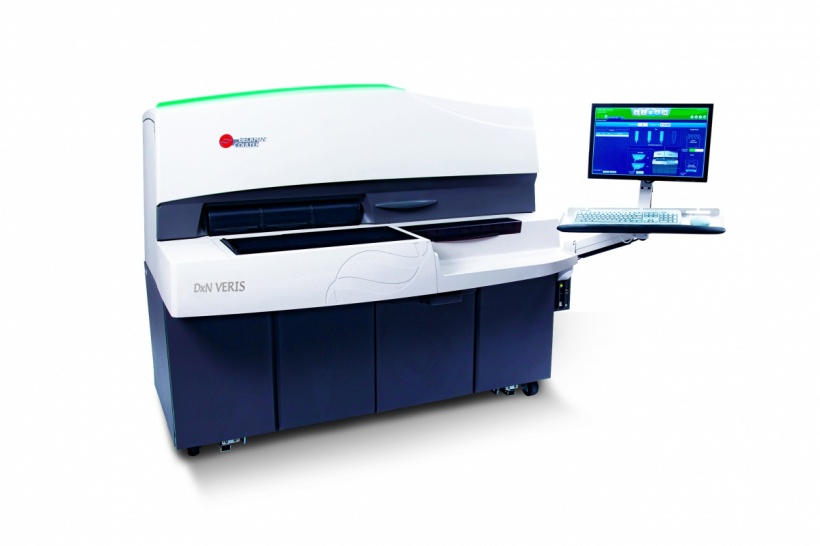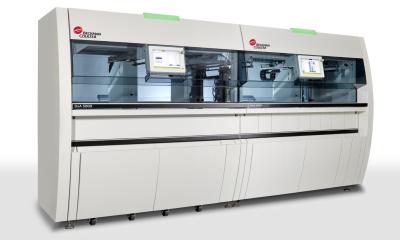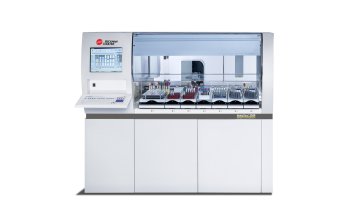
Article • Molecular diagnostics
A one-step system for faster turnaround of hospital samples
A new molecular diagnostics system is revolutionising analysis of hospital samples across an area of northern Italy. The Greater Romagna Area Hub Laboratory has recently installed the Beckman Coulter DxN VERIS Molecular Diagnostics System and is already reporting improved workflow and quicker turnaround time for results.
Report: Mark Nicholls
The greatest benefit has been the organisation of the workflow which is much easier, it is more linear and on-demand
Prof. Vittorio Sambri
Laboratory director Professor Vittorio Sambri explained that the system is being used for the four key tests of HIV-1, HBV (hepatitis B virus), HCV (hepatitis C virus) and CMV (cytomegalovirus) in his centre, which delivers all microbiology testing, bacteriology, serology investigation and molecular diagnostics for virology for 11 hospitals with 4200-plus beds between them, serving the 1.2m population of the Greater Romagna region.
The lab, which opened in 2009, upgraded to the Beckman Coulter DxN VERIS Molecular Diagnostics system earlier this summer.
Professor Sambri explained: 'We decided to go for the Beckman Coulter system for the analytical and organisational features it offered, as well as price. However, cost was a secondary issue. The greatest benefit has been the organisation of the workflow which is much easier, it is more linear and on-demand so you do not need to batch samples, which means we can provide reports to clinicians in a faster and more timely way.'
With a simplified, flexible workflow and single sample random access, the DxN VERIS Molecular Diagnostics System is an automated system for routine core lab work that combines all the sample DNA extraction, purification, assays set up and analysis in a four-step workflow: load samples onto rack; place on the DxN VERIS System; hit run; read results 70 minutes later (DNA) or 110 minutes later (RNA).
By reducing manual intervention, and automating the steps from sample loading to reporting of results, the DxN VERIS system has the potential to revolutionise laboratory workflows and reduce time to results.
There is no lengthy set-up with all consumables/reagents refrigerated on-board, enabling better use of staff resources, and random access is one-step sample loading per specimen as compared to the current batch systems.
The DxN VERIS system enables each sample to be independently tested, with results reported immediately when the individual test is complete, eliminating the wait time associated with batch results reporting. “From an organisational point of view, it is much faster and easier,” added Professor Sambri.

With the installation still relatively new, the Italian team is working closely with Beckman personnel on calibrations and controls and Professor Sambri has asked for a closer look at analysis of HBV samples, for example. “With HIV and HCV the system is really robust and with CMV the number of indeterminate results is extremely low,” he said. “Patients are also benefitting with results provided much sooner. Before having this system in place we were reporting results with clinicians in general within three days because we were performing three runs in a week. Right now, we report 97% of results within the same day of sampling.”
He added that there have been no major issues reported from clinicians within the first months of its use but the laboratory staff will be meeting with clinicians in the near future to fully evaluate the Beckman system.
Jaime M. Menendez-Humara, global strategic marketing director for Molecular Diagnostics, Beckman Coulter, said: “The DxN VERIS system ensures the ability that laboratories can run any of the four available assays, any sample, at any given time. It’s the ultimate in ease of use, giving the laboratory manager or director the choice of how to best optimize their team to do the work they want, when they want.”
Profile:
Professor Vittorio Sambri is Associate Professor of Microbiology, DIMES, University of Bologna and Head of the Unit of Microbiology at the Greater Romagna Area Hub Laboratory. He is involved in research related to outbreaks of Chikungunya fever and West Nile virus in Emilia Romagna Region in the recent years, and of new and emerging vector born infectious diseases in Italy. Professor Sambri is Vice President of the Association for the Study of the Infections and his work has resulted in more than 180 scientific publications in international peer-reviewed journals.
15.12.2016











